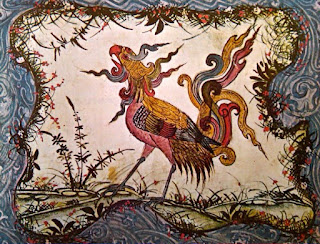English Mythology
English folklore is the assortment of legends that have arisen over the course of Britain, in some cases being expounded upon by progressive ages, and at different times being dismissed and supplanted by other illustrative accounts. These accounts comprise of society customs created in Britain after the Norman Success, coordinated with customs from Old English Saxon folklore, Christian folklore, and Celtic folklore. Components of the Question of England, Welsh folklore and Cornish folklore which relate straightforwardly to Britain are incorporated, like the establishment fantasy of Brutus of Troy and the Arthurian legends, yet these are joined with accounts from the Issue of Britain and customs from English fables.
Contents
Striking figures and legends
Alfred the Incomparable (849-899): In 878, consumes the cakes in Athelney, Somerset prior to overcoming the Incomparable Barbarian Armed force at the Skirmish of Edington.[1]
Angul (thirteenth hundred years): Unbelievable organizer and lord of the Points.
Ruler Arthur (late fifth and mid sixth hundreds of years A.D.): Unbelievable pioneer who, as per archaic chronicles and sentiments, drove the Knights of the Round Table in the protection of England against Saxon trespassers. A focal figure in the legends making up the Issue of Britain.[2] (see too: Welsh, Cornish, and Breton folklores)
Athelston (mid-or late fourteenth hundred years): Mysterious Center English refrain sentiment, frequently delegated an Issue of Britain message. Its subjects of majesty, equity and law and order connect with the governmental issues of Richard II's reign.[3]
Beowulf (dates to between the eighth and the mid eleventh hundreds of years): Legendary sonnet in Early English. The first composition has no title, yet the story it tells has become known by the name of its hero. Beowulf might be the most seasoned enduring long sonnet in Early English and is ordinarily refered to as one of the main works of Somewhat English Saxon literature.[4]
Sir Bevis of Hampton (dates to the principal half of the thirteenth 100 years): Amazing English legend; the subject of archaic metrical sentiments which bear his name.[5]
Brutus of Troy, or Animal of Troy (dates to the ninth 100 years: Unbelievable relative of the Trojan legend Aeneas, referred to in archaic English history as the eponymous pioneer and first ruler of England. Brutus initially shows up in the Historia Brittonum, however is most popular from Geoffrey of Monmouth's Historia Regum Britanniae.[6]
Fulk FitzWarin (c. 1160-1258): Subject of the archaic legend Fouke le Fitz Waryn, which relates the tale of Fulk's life as a bandit and his battle to recapture his familial right to Whittington Palace from Ruler John.[7]
The Story of Gamelyn (dates to c. 1350): Sentiment occurring during the rule of Lord Edward I, recounting the tale of Gamelyn and the different deterrents he should conquer to recover his legitimate legacy from his more established sibling. Written in a vernacular of Center English and thought about piece of the Question of England.[8]
Fellow of Warwick (dates to the thirteenth hundred years): Unbelievable English legend of Sentiment well known in Britain and France from the thirteenth to seventeenth hundreds of years; viewed as a component of the Question of England.[9]
Havelok the Dane, or Lay of Havelok the Dane (somewhere in the range of 1280 and 1290): Center English Sentiment viewed as a feature of the Issue of Britain; the story gets from two prior Somewhat English Norman texts.[10]
Hengist and Horsa (fifth hundred years): Unbelievable siblings said to have driven the Points, Saxons and Jutes in their attack of England in the fifth 100 years; Horsa was killed battling the Britons, yet Hengist effectively vanquished Kent, turning into the progenitor of its Jutish lords. A figure named Hengest shows up in the Finnesburg Section and in Beowulf.[11]
Lord Horn (dates to the center of the thirteenth 100 years): Chivalric sentiment in Center English; thought about piece of the Question of Britain. Accepted to be the most seasoned surviving sentiment in Center English.[12]
Woman Godiva (dates to essentially the thirteenth hundred years): English aristocrat who, as per legend, rode bare - shrouded exclusively in her long hair - through the roads of Coventry to acquire a reduction of the severe tax collection that her significant other forced on his occupants. The expression "Unwanted voyeur" starts from later forms of this legend, in which a man named Thomas watched her ride and was struck visually impaired or dead.[13]
Robin Hood (dates to the 1370s): Brave fugitive of English old stories who, as per legend, was an exceptionally talented bowman and fighter. Customarily portrayed wearing Lincoln green, he is said to ransack from the rich and provide for poor people. Close by his band of Cheerful Men in Sherwood Timberland and against the Sheriff of Nottingham, he turned into a well known society figure in the Late Medieval times, and keeps on being addressed in writing, film and television.[14]
Sceafa (dates, seemingly, to the sixth hundred years): Old Lombardic ruler in English legend. The story has Sceafa showing up strangely as a youngster, emerging from the ocean in an unfilled rowboat. The name has generally been modernized Shava.[15]
Waltheof of Melrose (c. 1095 - 1159): twelfth century English abbot and holy person; brought into the world to the English honorability, Waltheof is noted for his extreme, deliberate starknesses and graciousness to the poor.[16]
Wayland the Smith (dates to the eighth 100 years): Unbelievable expert metal forger who shows up in Deor, Waldere, and Beowulf; the legend is portrayed on the Franks Casket.[17]



Comments
Post a Comment